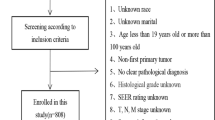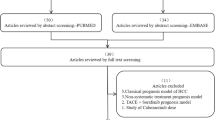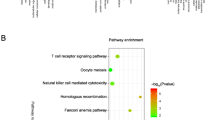Abstract
Liver cancer is one of the main causes of cancer-related deaths worldwide. Due to the extreme heterogeneity of this disease, its prognosis and management are still not yet standardized. Different treatment modalities are available. However, the patient’s response to each of them varies. Therefore, it is critical to establish a model to help physicians individualize the management of this aggressive tumor. This paper presents one of the first investigations into personalizing liver cancer treatment for patients with genotype 4 using their clinical and genetic data. In this study, we analyzed the data of 1427 Egyptian patients with liver cancer who were either treated by one of five different treatment methods or not treated. We proposed and compared between two pipelines, a Single-Model pipeline and a Multi-Model pipeline, for analyzing the patient’s clinical and genetic data to recommend the best liver cancer treatment and, therefore, potentially improve their prognosis. We studied the performance of six regression methods in predicting the outcome of the treatment modalities for liver cancer patients. The best performing method was used in building the models in the proposed pipelines. Our results show a difference in performance among different regression models, which proves the importance of choosing an appropriate one in decision-making, especially when dealing with important issues such as liver cancer treatment recommendations. In our analysis, we also prove the crucial importance of genetic data and their effect on patients’ prognosis and response to treatment. Finally, this study signifies the great potential that data-mining methods could have in improving healthcare especially for serious diseases such as liver cancer.




Similar content being viewed by others
References
Alexopoulos EC (2010) Introduction to multivariate regression analysis. Hippokratia 14(Suppl 1):23
Ali SNS et al. (2010) Developing treatment plan support in outpatient health care delivery with decision trees technique. In: International conference on advanced data mining and applications, Springer, Berlin, Heidelberg.
Antaki N et al (2013) IL28B polymorphisms predict response to therapy among chronic hepatitis C patients with HCV genotype 4. J Viral Hepatitis 20(1):59–64
Breiman L (2001) Random forests. Machine Learn 45(1):5–32
Breiman L (2017) Classification and regression trees. Routledge, Abingdon
Carpenter B (2008) Lazy sparse stochastic gradient descent for regularized multinomial logistic regression. Alias-i Inc, New York, pp 1–20
Chekroud AM et al (2016) Cross-trial prediction of treatment outcome in depression: a machine learning approach. Lancet Psychiatry 3(3):243–250
Drucker H, Burges CJC, Kaufman L, Smola AJ, Vapnik VN (1997) Support vector regression machines. Advances in neural information processing systems, 9th edn. MIT Press, Cambridge, pp 155–161
ElHefnawi M et al. (2012) Accurate prediction of response to Interferon-based therapy in Egyptian patients with Chronic Hepatitis C using machine-learning approaches. In: Proceedings of the 2012 international conference on advances in social networks analysis and mining (ASONAM 2012). IEEE Computer Society.
El-Houby EMF (2014) A framework for prediction of response to HCV therapy using different data mining techniques. Adv Bioinform 2014:181056
Goossens N, Hoshida Y (2015) Hepatitis C virus-induced hepatocellular carcinoma. Clin Mol Hepatol 21(2):105
Haeno H et al (2012) Computational modeling of pancreatic cancer reveals kinetics of metastasis suggesting optimum treatment strategies. Cell 148(1):362–375
Kourou K et al (2015) Machine learning applications in cancer prognosis and prediction. Comput Struct Biotechnol J 13:8–17
Kuhn M, Johnson K (2013) Applied predictive modeling, vol 26. Springer, New York
Louppe G (2014) Understanding random forests: from theory to practice. arXiv preprint arXiv:1407.7502
Oskouei RJ, Kor NM, Maleki SA (2017) Data mining and medical world: breast cancers’ diagnosis, treatment, prognosis and challenges. Am J Cancer Res 7(3):610
Rasmussen CE, Williams CKI (2006) Gaussian processes for machine learning. The MIT Press, Massachusetts
Schiefelbein E, Zekri A-R, Newton DW, Soliman GA, Banerjee M, Hung C-W, Seifeldin IA, Lo A-C, Soliman AS (2012) Hepatitis C virus and other risk factors in hepatocellular carcinoma. Acta Virol 56(3):235–240
Walczak S, Velanovich V (2018) Improving prognosis and reducing decision regret for pancreatic cancer treatment using artificial neural networks. Decis Support Syst 106:110–118
Xu M et al (2005) Decision tree regression for soft classification of remote sensing data. Remote Sens Environ 97(3):322–336
Yan X (2009) Linear regression analysis: theory and computing. World Scientific, Singapore
Yang JD et al (2017) Characteristics, management, and outcomes of patients with hepatocellular carcinoma in Africa: a multicountry observational study from the Africa Liver Cancer Consortium. Lancet Gastroenterol Hepatol 2(2):103–111
Yoo I, Alafaireet P, Marinov M, Pena-Hernandez K, Gopidi R, Chang JF, Hua L (2012) Data mining in healthcare and biomedicine: a survey of the literature. J Med Syst 36(4):2431–2448
Zayed N et al (2013) The assessment of data mining for the prediction of therapeutic outcome in 3719 Egyptian patients with chronic hepatitis C. Clin Res Hepatol Gastroenterol 37(3):254–261
Author information
Authors and Affiliations
Corresponding author
Ethics declarations
Conflict of interest
On behalf of all authors, the corresponding author states that there is no conflict of interest.
Additional information
Publisher's Note
Springer Nature remains neutral with regard to jurisdictional claims in published maps and institutional affiliations.
Rights and permissions
About this article
Cite this article
Abdelaziz, E.H., ElBahnasy, K., Kamal, S.M. et al. A regression-based model for predicting the best mode of treatment for Egyptian liver cancer patients. Netw Model Anal Health Inform Bioinforma 9, 41 (2020). https://doi.org/10.1007/s13721-020-00251-w
Received:
Revised:
Accepted:
Published:
DOI: https://doi.org/10.1007/s13721-020-00251-w




